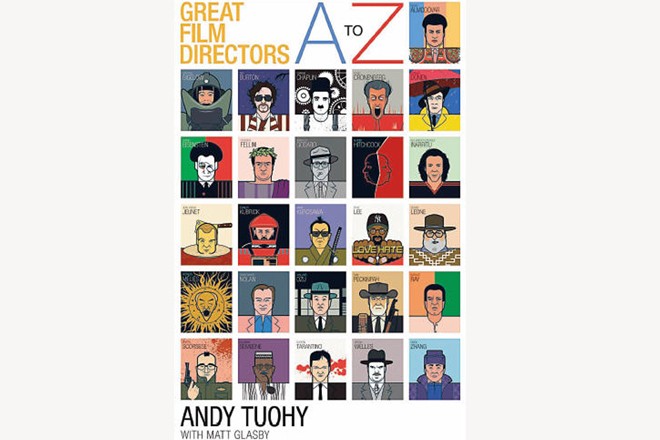
Andy Tuohy’s book, the A to Z Great Film Directors, is a mixed bag

Every film fan has one or two favourite directors whom they consider a cut above the rest. Some feel that Steven Spielberg is the best in the business, some worship Alfred Hitchcock and then there are those who feel Roman Polanski is the best person to call the shots.
Renowned artist Andy Tuohy’s portraits of 52 of the best film directors can also be described in a similar manner. The book, A to Z Great Film Directors, for instance mentions several notables who he could have done away with since they still have to prove their greatness.
The portraits are undoubtedly world class and if you are a film buff, it is a must for your collection. The accompanying text has been provided by film journalist Matt Glasby who breaks down each entry in unique style - an introduction of the director followed by ‘films to see’ and ‘did you know’ columns that will lure you to the book. You can easily search for the name of your favourite director and read about him first and read based on your own priority.
The collections of filmmakers, featured in this book, are not all famous. Some are as obscure and nothing springs to mind at first when one reads these names. And I am not talking about Asian film legends like Wong Kar-Wai and Akira Kurosawa who were labeled as kings of filmmaking when they were alive.
Yes, each director gets an exclusive painting by Andy Tuohy but it would have been better had the number been reduced to 25 ‘perfect’ candidates rather than 52, which feels like an arbitrary number.
You will find several greats in the first section such as Woody Allen, David Cronenberg, the legendary Ingmar Bergman, The Coen Brothers, Tim Burton and Francis Ford Coppola. However, the presence of filmmakers such as Kathryn Bigelow and Danny Boyle in this category makes no sense. Have they made more than a handful films in their entire career that can be termed great - No.
Yes, The Hurt Locker was a brilliant film and so was Trainspotting but if you think that Slumdog Millionaire was a classic, then Andy-Matt, you both need to revise your criterion.
The text n the book is certainly informative but personal bias is at play here given those who have made the cut and those who haven’t.
Federico Fellini, David Fincher and John Ford can be found in the second section but so can Russian filmmaker Sergei Einstein which is bizarre since only diehard Russian film fans might recognize his name or work.
In another instance, one would’ve loved to read more about Clint Eastwood in this chapter but the director doesn’t believe he falls in the same category despite 2 Oscars (and many Academy Award nominations) as best director!
It was good to read about Alfred Hitchcock, Stanley Kubrick and Akira Kurosawa in the next section but then there was Alejandro Gonzalez Inarritu in the same pages. Yes, he is one hell of a film director with Babel and Birdman to his credit but then so is Peter Jackson who has bigger and better films on his resume. In fact, Peter Jackson’s contribution to modern cinema is much more significant than several of his contemporaries yet he was conveniently omitted from this best-of narrative on filmmakers.
The feeling that the writer may be going on his own preference sneaks in again when Mira Nair and Terrence Malick are added in the same list as Sergio Leone, David Lynch and Christopher Nolan.
The creators of the book could have easily lessened the number of directors had they based it on common sense rather than the number of portraits available.
You will see Sam Peckinpah, Satyajit Ray, Martin Scorsese, Ridley Scott, Steven Spielberg, Quentin Tarantino and Francois Truffaut being discussed in the next two sections and that sort of redeems a lot of issues a reader might have. A separate section for foreign film directors would have been better rather than mixing East, West and Down Under, together.
No book is complete without Orson Welles and Billy Wilder but if you have seen other films by the Citizen Kane star, you’ll know that Orson Welles’s resume has more flops than hits. Like it or not, he is in the book while Cecil B DeMille, Frank Capra and William Wyler are not.
Did You Know?
Omair Alavi is a freelance journalist who can be contacted at omair78@gmail.com